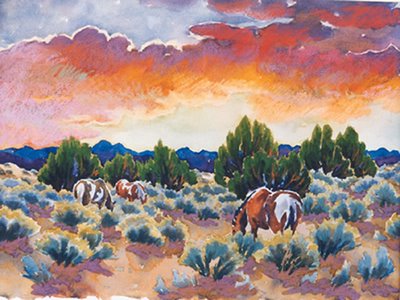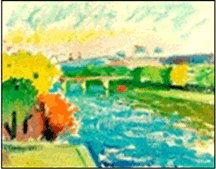
Watercolorist Pam Furumo is another artist who's not afraid to "push" hues to a higher intensity.
Much as I've thought about it, I still wonder how they "see" those colors. One suggestion that might be helpful is, "Squint for value, OPEN WIDE for color."
And if you're using watercolor, you really need to make it *brighter* than you think, because the color fades a bit as it dries. This is where straight-from-the-tube watercolor paint really helps.
One trick that makes color seem bright, while still keeping a reasonable semblance of reality, is to contrast areas of neutral tans or grays with a small area that sings more loudly.
Juxtaposition of complementary colors is another good technique for jacking up the drama of a passage that you want to emphasize.
Sometimes a partially-mixed combination of related colors can convey a more vibrant effect than a perfectly-mixed hue.
This quality of moody light & color is where plein-air painting really comes into its own. When you are "on-the-spot," you notice depth, contrast, shimmer, reflection and intensity that just isn't there in a photo or even in your imagination.
